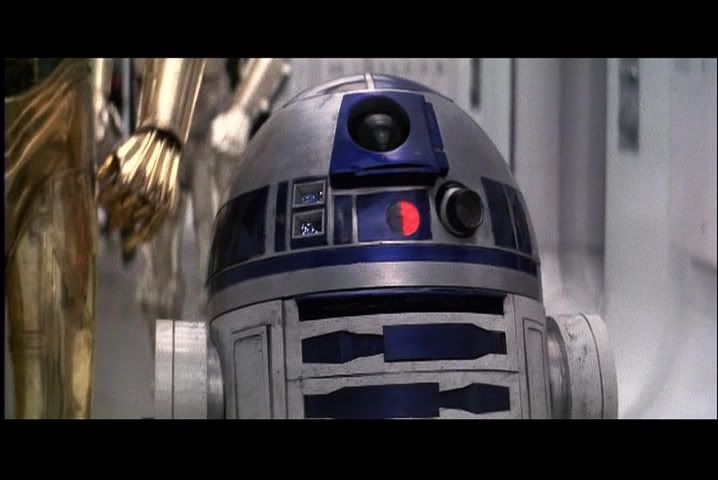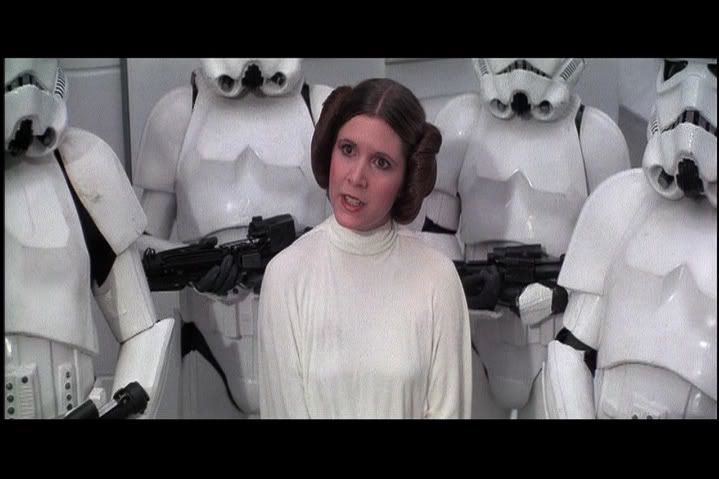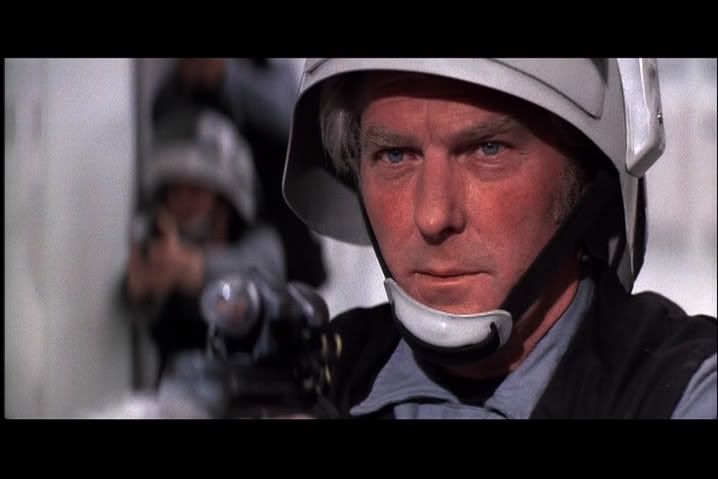Wow, I have so many questions to ask. First of all, I thought dvd was able to be 720p, which is why it had such a vast improvement over laserdisc. DVD was the first home video format to have progressive scan, right? And I thought it had a really high resolution that was the closest thing to HD while still being standard resolution. In fact, watching the 2005 Titanic dvd on a 4:3 rear projection screen (with a component video cable connection), I was amazed at how sharp it looked, I almost thought that was high definition video.
(fyi the movie is split onto 2 discs for better bitrate, and yes like many modern dvd transfers, it was taken from a video telecine that was originally captured in HD. But it looked like HD already to me back then, certainly better than a lot of HD television. If only it was the full film image.)
Okay, then. As for the screenshots, they look very close to the official unaltered LFL dvd. (Could those be added to the screenshots page?) The white spot on Leia's ship in screen 2 is a good example of just how sharp the video has to be to actually make such a tiny film flaw show up clearly. That being said, why didn't the creator use the original version dvd? Why would he use a laserdisc when only the top players have been shown to get almost even with a direct port of the D1 master tape? What laserdisc player was used anyways? Would it be possible to see a few before and after examples of his captures?
And what would have happened if he used the same techniques on the original version dvd? If that was done, it would be easier to tell which is a better video in terms of having less of a grain coating. And as for the aliasing on that shot of R2, I think the unaltered dvd has that problem too with the same shot, though it might not be as much.
Also why use a 5.1 mix rather than the uncompressed PCM stereo from the laserdiscs? Isn't 5.1 a modern remix, not something Star Wars originally had anyways?
The other thing I would like to point out is that it would be possible to remove some of the ghosting from the THX discs, even without using footage from another release. There are some shots that had smearing where the camera perfectly stationary. For example the shot where Han Solo is chasing the stormtroopers down the hall on the Death Star. Well, the ghost trail left behind could be removed with the next frame where that same part of the image does not have any smearing on it.
Of course that would only work some of the time, but I think it would be a good start to get as much of the DVNR taken out just from the THX source. That would be give future preservation projects something to build on as footage from either the special collection or 1997 special edition could be used to probably take out the rest. And that would at least give us a smear free version of the original Star Wars movies that would keep the sharpness and color accuracy of the THX versions. Anamorphic or not, that would be very valuable to have.
Also, if someone was able to get this off a laserdisc, couldn't a decent transfer be made from the widescreen letterbox of THX 1138? I have the original version made from a dvd recorder and while it doesn't look bad, I have to imagine a much better transfer could be made of that movie, even without a frame by frame enhancement in photoshop.





